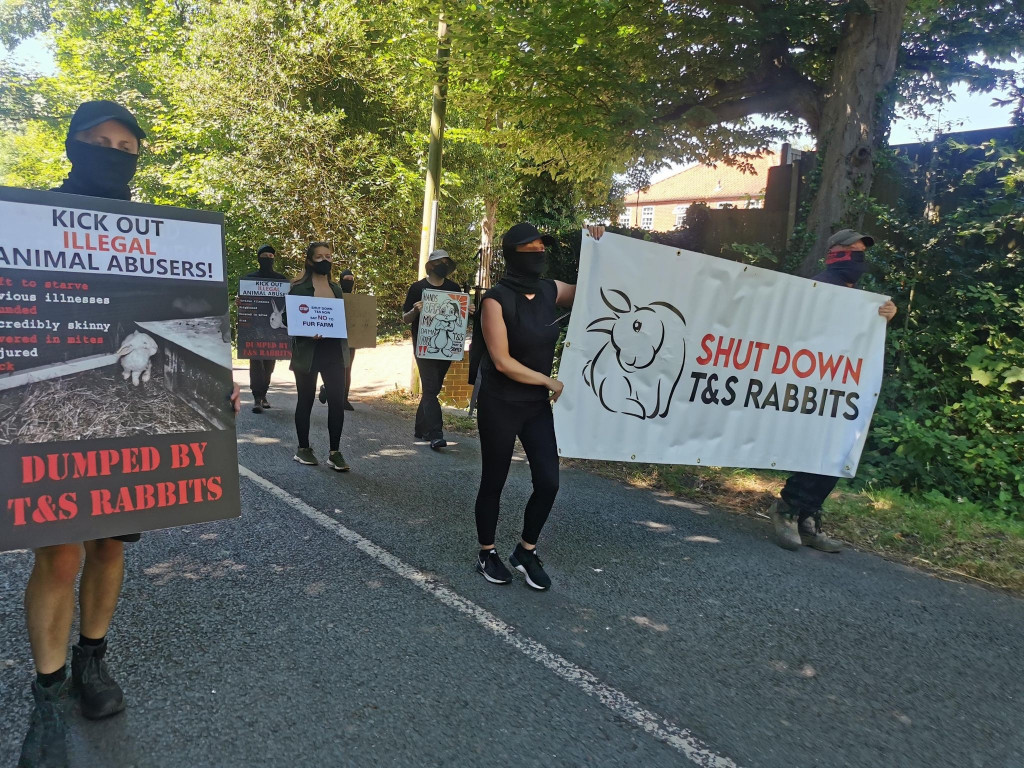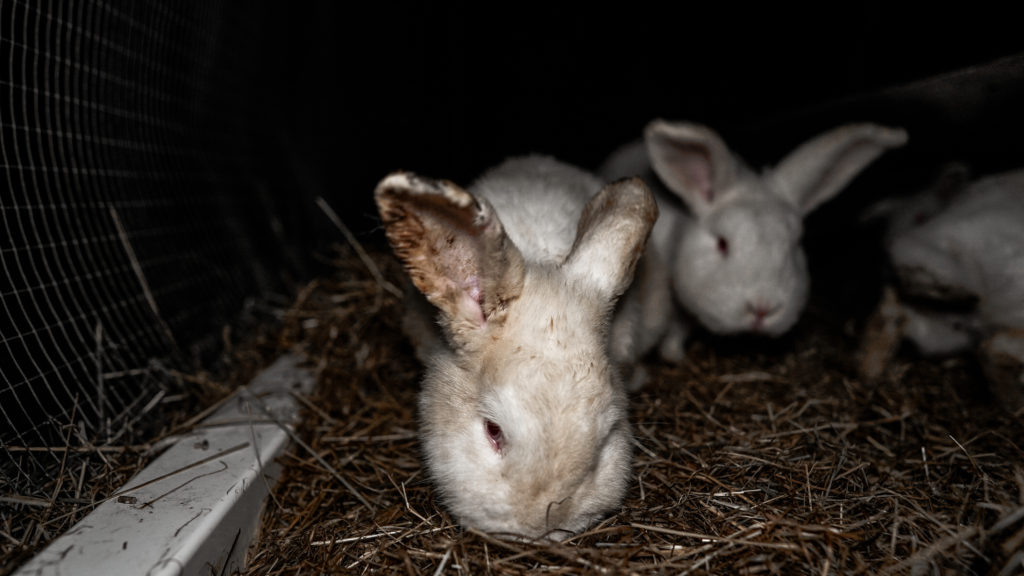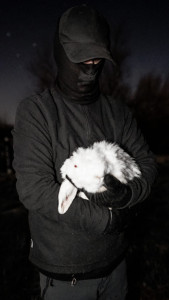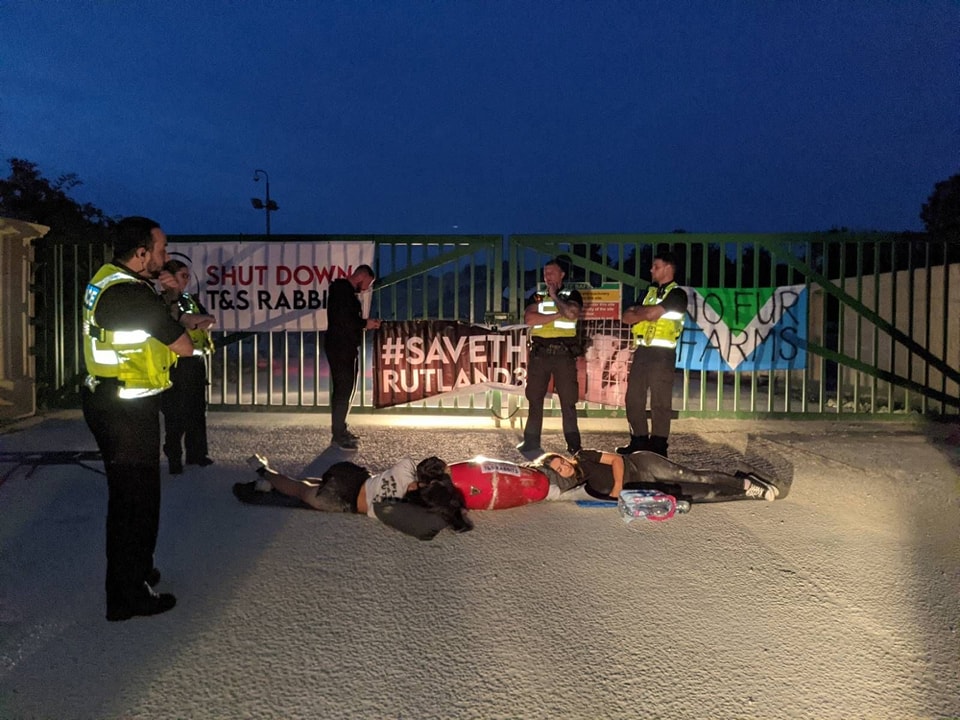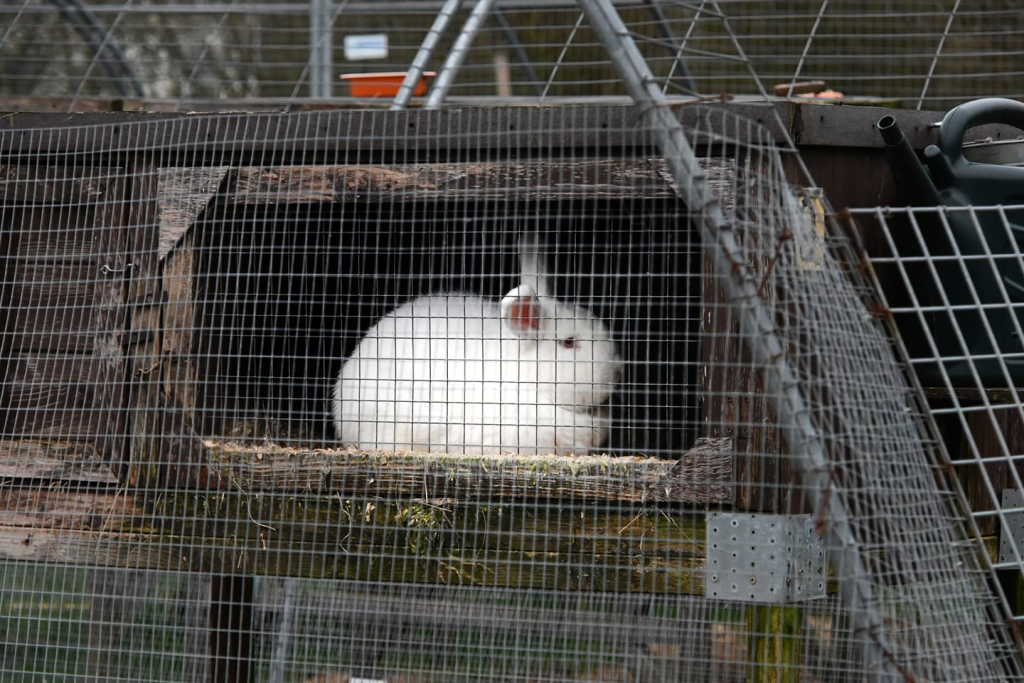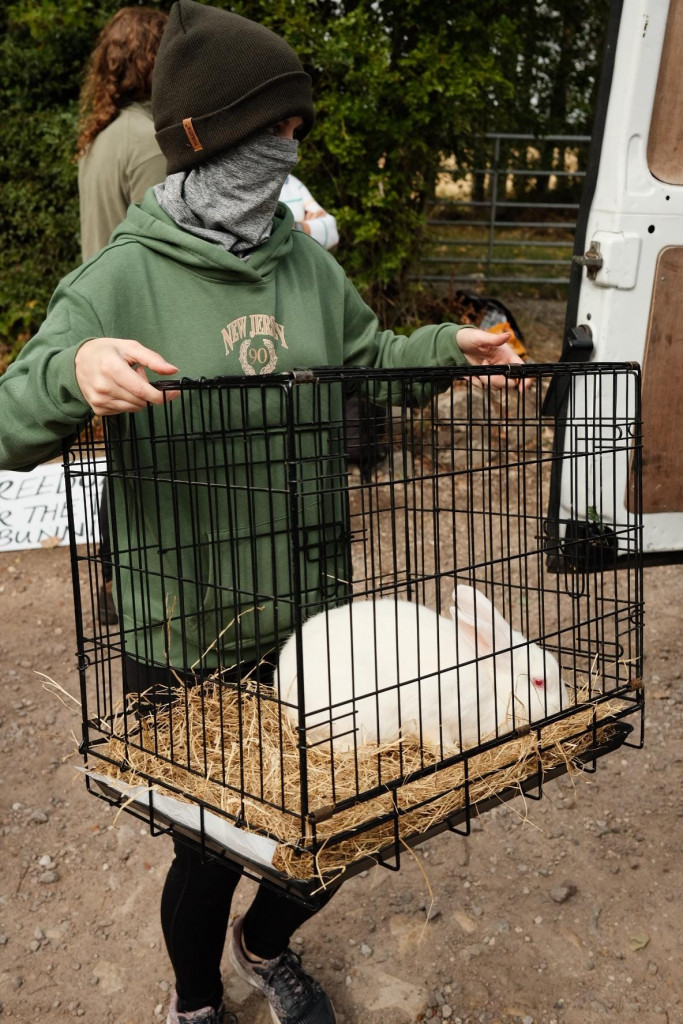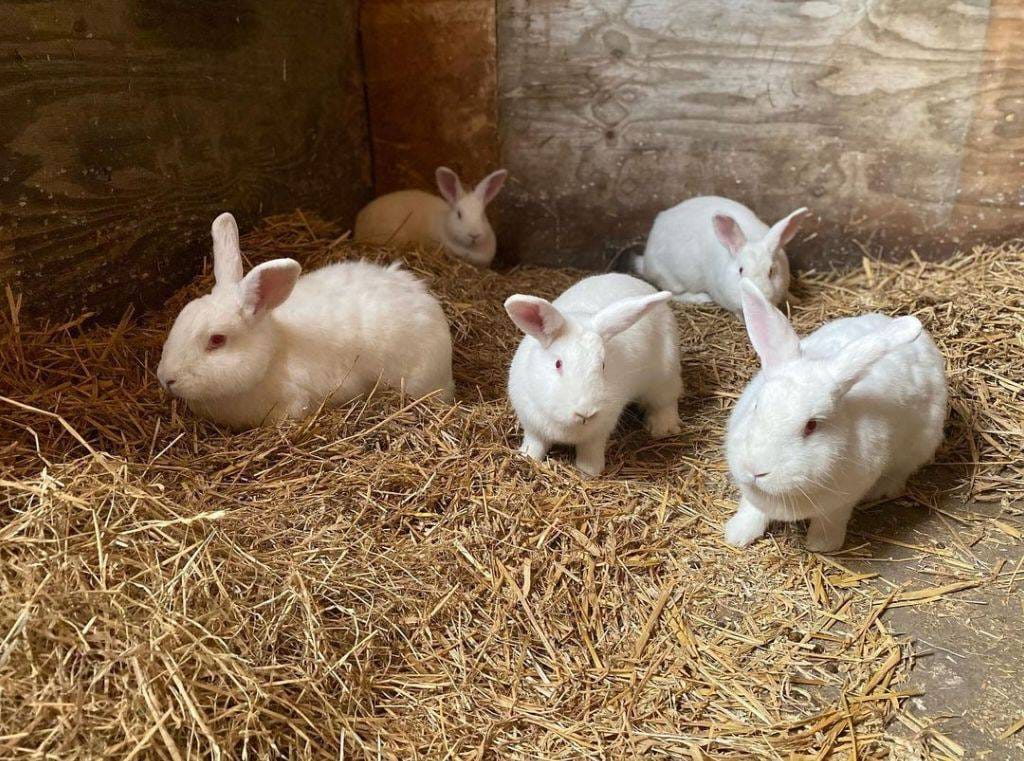Interview: How we shut down T&S rabbit breeders
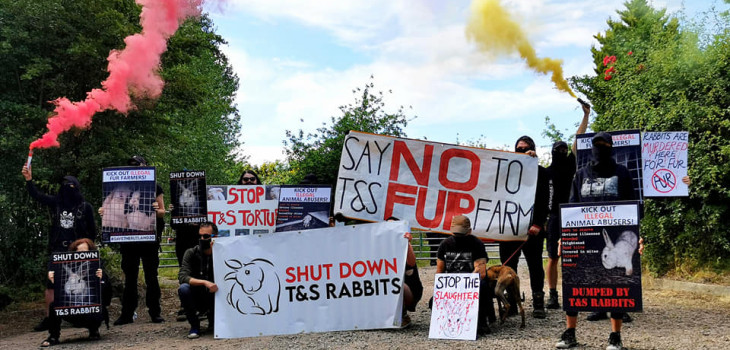
Corporate Watch spoke to an activist with Shut Down T&S Rabbits, a UK campaign which recently succeeded in closing down a network of rabbit meat and fur farms.
On 16th August 2022, 17 months after the launch of the campaign, T&S owner Phil Kerry relented, explaining:
“I made the decision to give into their demands. We couldn’t fight them anymore because they are too strong.”
We wanted to give Shut Down T&S Rabbits space to share reflections on their successful fight. The case shows how in struggles against corporate power, knowing your enemy can make the difference between success or failure.
Could you tell us why you chose to launch this particular campaign?
For a long time, it felt like the movement bore witness to the struggle of animals. For example, people would get footage from the slaughterhouses. But we felt we needed a win – and this target was obviously something we were going to win. We were looking to the past, with SHAC* for example, and compared to that, here we weren’t looking at a multinational company with a lot of power.
Also, it was very obvious that those rabbits in the farm were suffering a lot. It was a really horrible situation for them. The vast majority of them were not actually being slaughtered; they were dying out of neglect.
The UK has had a prohibition on fur farming since 2000, 22 years ago. He [owner Phil Kerry] found a fantastic loophole to be able to farm fur in 2022 by claiming it’s just a by-product of meat. And that was just such a middle finger to all the activists of the 80s and 90s. Many had gone to prison, and this guy was there farming fur. It was outrageous.
Can you give us an overview of the kind of company you went up against?
I guess we could describe it as Phil Kerry and his group of companies. The rabbit business wasn’t an impressive company, it didn’t make a lot of money, but he owns a lot of companies that do. T&S was a vineyard and plant nursery that had then been transformed into a rabbit farming business. Interestingly, he also has a limestone quarry business called Goldholme that supplies to big companies like Travis Perkins.
As well as the quarrying business, he also had a stone-cutting business. Alongside that, he started a new company called Into the Wild, running shepherds’ huts for glamping.
The campaign involved a strategy of putting pressure on primary, secondary and tertiary targets, which has often been used in animal liberation campaigns. Before we get into details of what went on, can you briefly describe what that means?
The primary target is the main people you’re up against. So in this case, Phil Kerry and T&S.
Secondary targets are any businesses that have some sort of relationship with the main business or person you’re trying to convince, eg. the Goldholme quarry business.
Tertiary companies are involved in the secondary companies. The builders’ merchants Jewson and Travis Perkins were tertiary since they made deals with secondary targets. 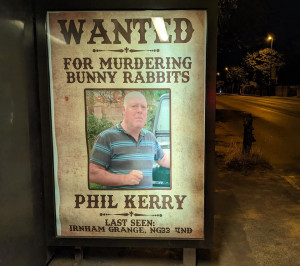
Can you give us an overview of the campaign, perhaps a timeline of significant events?
The first thing worth mentioning is that, before the campaign launch, there was a large amount of time and work put in to understand the person and the company.
It is also worth saying that underground [anonymous] activists had been doing liberations for three to four years before the campaign happened, and were raising awareness about the farm. The campaign finally launched in March 2021 after another group, Rabbit Farm Resistance, held some demos there.
The first focus was Rutland Farm, a small farm with 30-40 rabbits. It was next to a nature reserve. The wildlife trust that owned the reserve did not want the farm there at all. It helped it was a very busy location… touristy, and a good place to have a lot of visuals about what was happening there.
So the “Save the Rutland 30” mini-campaign was launched. The first glamping site [of Phil Kerry’s] had been set up there as well. That was useful because it needed to be an idyllic place. There were demos outside, the glamping site got targetted. For instance, there were lots of reviews posted online. They were very upset about that. Since it was a secondary target, you never know if it will affect them.
At some point, we received the news that on Easter Sunday, a group of 30 people, black bloc-style, had gone into the farm in the middle of the day, in front of everyone walking around with their children, and did a daylight raid to free the rabbits. Massive amounts of police showed up, 12 people got arrested, a handful of rabbits got taken back to the farm, but I believe that about 32 rabbits made it out. Obviously we want to make it clear that we are an above-ground campaign group, and while we would never criticise actions and support diversity of tactics, we had nothing to do with the daylight raid.
Arrest-wise, those people are still waiting to hear from the police. We will support them to the fullest. Everybody taking any sort of action for those rabbits deserves the utmost respect and love.
Very soon after, the last rabbits were moved away [from Rutland] and the farm itself was dismantled. We had shut down one of T&S’ farms.
There was then a bit of time where we focused on planning applications. T&S had been applying to get planning permission for rabbit farms in Buckinghamshire and Cornwall. Both of those got denied by the council. We focused on an application in Derbyshire that Phil Kerry was trying to appeal after permission was also denied. There was a lot of outreach in the local area. People would stand in the street in the town centre, give out leaflets and urge people to express their feelings to the council. There were also demonstrations in front of council offices. And we were preparing to oppose it with a barrister, which scared Kerry and he withdrew the appeal.
Can you tell us about the undercover investigations?
People had been collecting undercover footage from East Bridgford for months and releasing it to the public. One of them exposed the neglect the rabbits were suffering, and the dead rabbits that were being taken to a freezer every morning, to end up in a maggot farm used for fishing. Another video showed them throwing the rabbits around and forcing them to breed.
Some underground people [anonymous activists] visiting the sites said that they had found 11 rabbits left with no food or water in two of the runs at Granby, which had been Kerry’s main farm and had since closed. There were huge infections and mites, the photos are horrible. They had just been left to die. They took the rabbits and released a video showing the conditions. The footage they had obtained really showed how gritty and horrible it was up close, and the fact that Kerry would just abandon those rabbits to die – he couldn’t even be arsed to kill them. That upset a lot of people, for sure.
What happened after the success in Derbyshire?
So by the final stage of the campaign, we have the planning applications crushed, and Rutland is gone. The last place is East Bridgford, his main farm. There they had 250+ rabbits, and an application for a rabbit slaughterhouse and dwelling.
There were lots of demos in front of the gates of the farm, as well as a huge effort to reach out to East Bridgford and surrounding villages. Door-to-door leafleting, talking to people… Over 1000 leaflets went out in a day, and there was a 20% return: 200 objections to the planning application had been made within 48 hours. And people objected very emotively as well: they didn’t want to walk past that place with their children.
So we have outreach, demos outside the council, and demos almost weekly now at the farm. We announced a week of action in August, calling for people to take autonomous action in their groups to stop T&S hurting the rabbits and to call for them to be released. People across the country organised. It was beautiful to see.
The first day of the week of action, we woke up to the news that an underground group had gone to two of Kerry’s old sites and smashed up every window, every door, and every wall of the place. There were lots of banner drops around the country. That was really appreciated ‘cos we understand that people live far away and that they can’t come to the farm, but they hate the idea of what’s going on.
During the week, another group did ad-hacking in bus stops with “wanted” posters showing Kerry’s address, as well as pictures of liberated rabbits. On the Sunday, Operation Liberation UK, [another group] announced they were setting up a camp on the verge outside the farm. That forced Kerry to have 24hr security. When we heard about the camp, there was a slightly unsettling feeling. Because it’s a wealthy area, and all of a sudden activists were setting up portaloos and tents. But the locals were incredible! They brought stuff for the camp – including vegan food – they were amazing…
There were multiple reasons for the support. First: no one wants a slaughterhouse in their village. Second: bunnies are very cute. And there was a sense that while some people might not be too comfortable with a temporary camp, having a slaughterhouse would be horrible. Certainly, the amount of outreach helped put the campaign on the map. There was only one local person we heard of who was vocally opposed to the camp.
I cannot emphasise enough just how incredible the locals have been.
On the Sunday, there was the main national demo. We asked for people to come from wherever they were if they could. There were lots of people there and lots of locals came too; it felt powerful. That wrapped up the week of action.
Then we woke up to find that the week of action hadn’t ended. Smash Speciesism, who do very disruptive actions, had gone to Goldhome quarry (another of Phil Kerry’s businesses) and blockaded the gate, stopping any lorries going in. About 10 protestors were there, and three times that amount in police. There were a lot of really upset workers in the quarry, who couldn’t see how the rabbits had anything to do with the place. Smash Speciesism’s aim was to raise awareness that Phil Kerry was supplying limestone to Jewson and Travis Perkins, and was involved in bunny killing. The blockade lasted eight hours. In front of the press, the police said they respected the right to protest, but as soon as the press left, the police tried to arrest everyone, including those just standing there holding placards. People managed to run away, but two were arrested.
There were a lot of emotions boiling. Calls went out for people to contact these big companies and ask them not to buy from the rabbit killer. The story was covered by the media.
Phil Kerry did a press release, calling it a witch hunt. He said they had nothing to do with fur farming, and that they couldn’t give up as they would just be giving us ammunition if they did. There was more pressure, with people calling and emailing Travis Perkins and Jewson. The next day we received an email from Phil Kerry, signed by a Goldholme worker, saying Kerry was retiring from rabbit farming and asking for the rabbits to be taken away, as long as the protests stopped.
Can you give us an insight into the creative actions that people used in campaigns against T&S? They don’t have to be actions carried out by your group.
It’s important for people to understand that this campaign was heavily reliant on diversity of tactics, and we wouldn’t have it any other way. We were not there to police what people could and couldn’t do. Autonomous groups did sabotage, liberations, ad hacks, organised demos and called up secondary and tertiary targets. We at Shut Down T&S Rabbits didn’t do anything illegal, and our info was obtained from open sources.
Here’s one example of a creative action: Kerry’s Into the Wild business had a stall at a glamping show. It would be their first time going out to sell their shepherd huts. The show was emailed and told what was going on, showing the links between the company and footage from the dead rabbits. It was asked whether it wanted to support the rabbit killer. In the end, the show cancelled their stall.
What do you feel were real turning points?
The campaign against secondary businesses; the glamping site being targetted online; the liberations; the severe pressure T&S received by the camps, which finalised in targetting Goldholme.
But the week of action wouldn’t have worked if it had happened earlier. We had been building up not only our social media and internet presence, but we were constantly keeping our eyes open to all the other businesses. All of that together made the week of action very effective.
What lessons do you feel can be shared with other campaigners standing up to corporate power?
Strategy, strategy, strategy! Knee-jerk reactions are sometimes necessary, but knowing that they are coming and how to control them is useful.
Building a thorough knowledge of who the company is and what they do is important, because they were doing so much dodgy stuff. Also understanding their personalities, because that could lead to a different strategy.
Never policing actions: as a campaign we don’t take or promote illegal action, but we cannot police what people are doing. People feel a rage inside, and that might be shown in different ways.
Learning about history and how campaigns have happened in the past, and reaching out to older activists and learning from them is super important, because lots of people have loads of experience but may feel slightly alienated or burnt out. It’s about building those bridges and also getting those people back in the game.
Also, practice security culture. Make sure you’re protecting your friends. Create an environment where people feel safe, and they will come.
Finally, be sure of yourself – almost to the point of arrogance. You know you’re going to win and you’re going to do what you need to do to get there. Your convictions should drive you to stop it: you have that power, not the charities, politicians or governments, you have that power.
What next? Where would you recommend people who have been supporting the campaign put their energies after this?
Seeing that Phil is attempting to start other animal exploitation businesses in order to build houses on his land, it would be very nice to see people organising against that.
Also, Palestine Action is kicking ass and is very impressive. It’s so refreshing to see they have no remorse, because the people making those weapons that are killing Palestinians deserve nothing less. Free the MBR Beagles is also a worthy campaign to analyse strategically.
Overall I would say, people should feel empowered to look at something and say, “hey I don’t like this”, and get a group of mates together and draw up a plan.
It’s good to support other campaigns, it’s super important. But I would love for people to understand that they have the power to do it themselves. If you don’t like something, study it, learn, go for it, and if you can be sure people are safe they will join you. That’s direct action.
We’re really happy the bunnies are now out and we’ve found a home for all 202 of them. But we’re concerned about their wellbeing and will need a lot of funds to make sure they’re all treated by vets, so we’re launching a fundraiser. Everybody that would like to support this effort can donate here.
*SHAC: Stop Huntingdon Animal Cruelty, a long-running international campaign to shut down vivisectors Huntingdon Life Sciences.
All images courtesy of Shut Down T&S Rabbits unless otherwise specified
A printable A3 poster version of the timeline below is available here.

